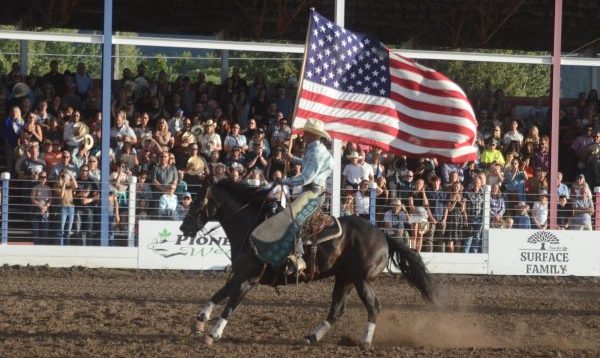Practical backpacking in northeastern Oregon
Published 4:14 pm Thursday, April 11, 2019
There is something appealing about the sheer simplicity of backpacking. When you carry on your back everything you need for several days and nights in the backcountry, you are free. You can hike as far as you want, camp where and when you want, eat from your pack and enjoy a wilderness adventure of your own making.
We are fortunate in northeastern Oregon to have world-class backcountry hiking and camping opportunities within a few hours’ drive. Among the local wilderness areas, the granitic glaciated high country of the Elkhorn and Wallowa (or Eagle Cap) Mountains provides uplifting scenery with abundant cold, clear water and long extended wildflower blooming seasons. Even better, much of this country sees few visitors every year, so backpackers have a good chance of getting as much solitude as they want.
Trending
Most of the high quality backpacking in our area is in National Forest Wilderness Areas. That’s Wilderness with a capital W, as these are areas established under the federal Wilderness Act of 1964. This law provides us with places where “…the earth and its community of life are untrammeled by man, where man himself is a visitor who does not remain.” This means we have places where mechanized equipment (including bicycles, hang gliders and drones) is not permitted, and agencies manage the land to provide quiet solitude and protect sensitive natural resources. You won’t find roads, cabins, developed campgrounds or water sources, outhouses or other such creature comforts on federal wilderness lands.
The Wallowa and Elkhorn mountains have many trailheads around their perimeters where backpackers can hit the trail. Most of the trailhead parking areas require a recreational pass for your vehicle, which is available online, at Forest Service offices and from local vendors. Each party of wilderness users must also register and obtain a free wilderness permit at the trailheads.
Some trailheads and destinations are very popular. On mid-summer weekends you may find it difficult to find solitude if you choose a trailhead near Wallowa Lake or the Lostine River, for example. To really get away from people, choose from among the many less well-used areas on the south or east side of the Wallowas or any of the Elkhorn Mountains trailheads.
While no one article or writer can tell you everything you need to know about backpacking in our area, here are a few tips I offer from my 40 years of backpacking for work, play, and adventure.
Backpackers should pay attention to the amount of weight they are carrying. Some challenge themselves to carry less than 25 pounds for a multi-day summer trip, which requires an investment in ultra-light gear and a certain amount of sacrifice and obsessive attention to cutting ounces. The casual backpacker, however, can realistically manage a 35-40 pound pack with careful planning.
Find a lightweight synthetic or down sleeping bag, a three-quarter length sleeping pad and a two-person three-season tent for shelter from weather and mosquitoes.
Trending
Water is heavy, and backpackers don’t even try to carry enough water for an entire trip. Water in the backcountry is usually plentiful, but it must be treated before drinking no matter how clean it looks. Fortunately there are many choices for filtering or chemically treating drinking water on site. I prefer a lightweight gravity flow system that runs water from one water bag suspended in a tree through an in-line filter.
Don’t plan on using a campfire to heat water or cook. They are prohibited in heavily used areas and at the peak of wildfire season, and dry fuelwood can be hard to gather. There are some very light-weight options for backpacker stoves, and I use a Jetboil stove to heat water and make meals. Your camp cook gear should be simple – one plate, cup, and spoon per person, and as few cooking implements as you can get away with.
While they are handy, you don’t need to buy expensive freeze-dried backpacker meals. The grocery stores are full of one-pot meals based on dried noodles, rice or soups for camp dinners, and you can build lunches around trail mix, energy bars, cheese, bagels, etc. Dried instant oatmeal, dried fruit and coffee make up my usual trail breakfast.
Clothing – avoid cotton, as it is heavy and dries very slowly. Instead, use lightweight synthetic fabrics and make every choice for flexibility. Zip-off pant legs, for example, provide you with both long and short pants. A long-sleeved shirt is essential for warmth or protection from bugs or sun. Think multiple layers for more warmth instead of heavier clothes. Don’t forget a lightweight rain jacket, a hat for protection from the sun (which can be brutal at higher elevations), and a knit cap for night-time.
Boots or hiking shoes? There are several schools of thought on this topic, but for hiking on rough, rocky trails with a backpack, I prefer light boots that provide ankle support. A sprained ankle can ruin a backpacking trip. Bring a lightweight pair of strap sandals to wear around camp, on stream crossings or in an emergency. Be sure your hiking shoes or boots are well broken-in, and your feet used to them.
Don’t forget a basic first-aid kit, mosquito repellent, sunscreen, Band-Aids and moleskin.
Experienced backpackers have developed habits to make their trips more enjoyable. For example, plan on fewer rather than more miles per day. You might walk three miles per hour in town on sidewalks, but with a pack on your back on uneven, rocky trails that climb and lose elevation, with snowdrifts, stream crossings, and switchbacks you can plan on cutting your pace in half. By planning on fewer miles per day, you have more flexibility and you are more able to manage the unexpected (weather delays, sore feet, etc.).
I plan to find a campsite in the early afternoon each day. This gives plenty of time to explore an area or fish, nap, read or swim. It also gives the option of hiking a bit longer if necessary without running out of daylight or energy.
To help plan and stay on a route, do a little pre-trip scouting from your computer. Forest Service websites have information about trails, distances, and condition. You can use your cell phone and a number of applications to help track your progress and stay on route, but you won’t find a cell signal in most areas so be sure to download the relevant map before leaving home. Keep your cell phone on airplane or low power mode to save your battery power. Don’t rely on any electronic device, however. Carry a paper map and a compass, and know how to use them in case of a dead battery or breakdown.
Many trail routes include stream crossings, and most of these do not have bridges. I use my lightweight camp shoes or sandals to cross any stream deeper than a quick splash and a trekking pole or sturdy stick as a third leg. Take some time to scout for the best place to cross, avoid anything deeper than your knees, and be sure to release your waist belt on your pack before stepping into the water.
Mosquitoes can be a real nuisance during much of the summer in high country, especially near standing water. I like to select a campsite on a ridge where the wind helps keep mosquitoes at bay. Long sleeves, long pants, and bug repellent go a long ways to maintain your sanity among the whining hordes, and we have found lemon eucalyptus oil to be a promising alternative to DEET.
Be sure to leave the details of your trip with a trusted friend or relative. Include the trailhead you are using, the route you are planning and when you will return home.
The most important thing is to build flexibility into your trip. Plan on hiking fewer miles per day and carrying less weight than you think you can so that you can do more if needed. Plan on coming out of the wilderness at the same trailhead as you started, so that you can turn around and head back when you want instead of being committed to a through-route. Carry shelter, even if the forecast is for clear skies.
And stop to take a few pictures, they will lift your spirits on dreary winter days to come.
Information Sources:
https://www.rei.com/learn/expert-advice/backpacking-beginners.html
https://www.fs.usda.gov/wallowa-whitman









